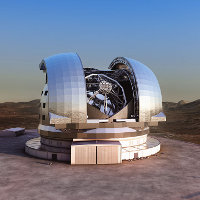Dutch instrument could help search for extraterrestrial life

Dutch scientists have developed an instrument capable of detecting the presence of living plants kilometres away, which in the future could be used to help search for extraterrestrial life.
Lucas Patty of the VU Amsterdam has built the TreePol spectropolarimeter, a camera with special lenses and receptors able to detect the rotation of light that occurs when it is reflected by plants. His instrument is able to detect the difference between healthy and dying vegetation. Patty tried out his instrument on the roof of the university by pointing it at a nearby football pitch and didn’t get a signal: turns out the pitch was made from artificial grass.
Scientists are now investigating whether TreePol could be used to monitor agricultural crops from an aircraft or satellite, and maybe it could be used at even greater distances. “We’re also working on a version that could be used on the international space station or a moon lander,” explains astronomer and co-developer Frans Snik of Leiden University.
Over the last two decades, astronomers have discovered almost four thousand ‘exoplanets’, planets that orbit stars other than our own sun. Astrobiologists have often focused on the presence of water, oxygen and carbon, but these molecules and atoms don’t always show the presence of life and therefore involve the risk of a ‘false positive’. TreePol could finally eliminate that false positive, and that is all kinds of exciting.
Back in 2013 we wrote about the search for extraterrestrial life at Leiden University by detecting oxygen on far away planets using transit observations.
On an related note albeit not a Dutch one, if you want to listen to entertaining YouTubers talking about what they call ‘woo woo’ (UFOs, weird places on Earth, spooky stuff, etc.), then you absolutely need to listen to Gary and Diktor van Doomcock on the ExoZone on Nerdrotic and/or Overlord Diktor van Doomcock.
(Link: phys.org, Photo of an artist impression of the European Extremely Large Telescope by ESO/L. Calçada, some rights reserved)

Leave a Reply